This fluffy focaccia recipe is by far the most popular recipe on my site, and for good reason! Through countless rounds of testing, I’ve developed a delicious no-knead bread with a crisp exterior and a soft, fluffy inner crumb. An overnight rise in the refrigerator and a long fermentation period provide a deep flavor and a golden brown crust.
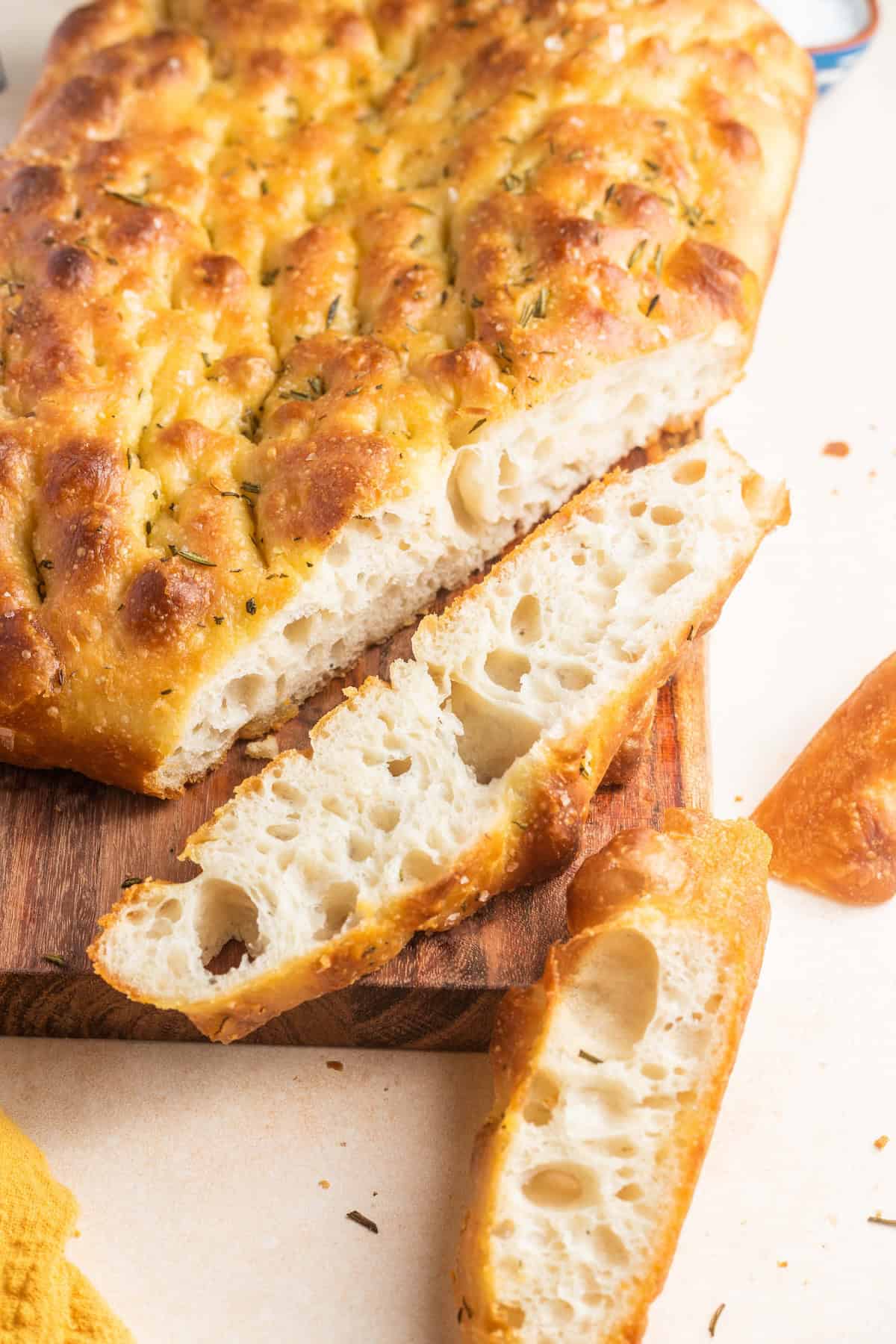
Originally published in 2021, this recipe is a total crowd favorite. See why so many readers love it:
Reader Rating: "I have spent a year in search of the best focaccia recipe, and this is it! Other recipes have produced a bread that has a cornbread-like consistency. Still others have produced a soft, non-crispy crust. This one is as close to perfect as I have found. I love it! ★★★★★" - David
👩🏽🍳 Testing Notes
In my experiments, I learned about fermentation time, pan sizes, pan thickness, and how oven temperature could yield dramatically different results to produce my absolute favorite recipe! I’ve tested and adjusted this many times to achieve a bubbly, crunchy exterior and a moist, soft, and airy interior.
The recipe is simple, but it takes time. You can’t speed it up, and in my opinion, you wouldn’t want to. A slow fermentation is what helps produce a delicious, lovely crust.
I highly recommend trying this homemade focaccia recipe as written the first time, and then experimenting with different variables to achieve your perfect rendition.
A Quick Overview
My recipe uses many of the same techniques as the Genovese style but with a thicker, bubblier crust. Here are some of the differences between regional varieties:
- Focaccia Genovese uses a salt brine and bakes at a lower temperature than pizza (Samin Nosrat's focaccia variation for Ligurian focaccia is inspired by this!).
- Focaccia di Recco is paper-thin dough stuffed with cheese, yielding a thin, crispy pastry.
- Tuscan Schiacciata is typically topped with rosemary or grapes.
- Focaccia Barese (from Bari) uses semolina and boiled potatoes for a softer interior.
Though there are many variations, most follow a similar set of principles:
- Ingredients: Almost all varieties use flour, water, salt, oil, and yeast.
- Two rising periods: In the first period, the dough is mixed together, then set to rest and rise (also called bulk fermentation). In the latter period, the dough is deflated and then transferred to a pan for a second rise.
- Dimpling: Before baking, the dough is dimpled using your fingers. Some variations require light dimpling, while others are more aggressive.
Ingredient Notes

- Flour: Flour with a high protein content (at least 11%) is essential for strong gluten development leading to that fluffy texture we know and love! I typically use bread flour or Antimo Caputo’s 00 Flour. In a pinch, you can use King Arthur’s all-purpose flour, which has a protein content of 11.7%.
- Water: This recipe has a higher hydration, meaning the ratio of water to flour is quite high. High-hydration doughs yield a moist and spongy texture.
- Instant Yeast: Unlike active dry yeast, instant yeast can be added directly to dry ingredients. You can also use active yeast; just dissolve it in some of the liquid first.
- Kosher Salt: Salt assumes many roles in baking, from strengthening gluten to creating better elasticity and lowering stickiness. And there’s the obvious one: providing flavor! Salt also slows down fermentation to improve flavor development.
- Extra-Virgin Olive Oil: Olive oil provides flavor and moisture. Feel free to use an everyday olive oil for the dough. For dimpling and drizzling, use a more premium variety if you wish.
How to Make Focaccia (Step-by-Step Photos)
Make the Dough:
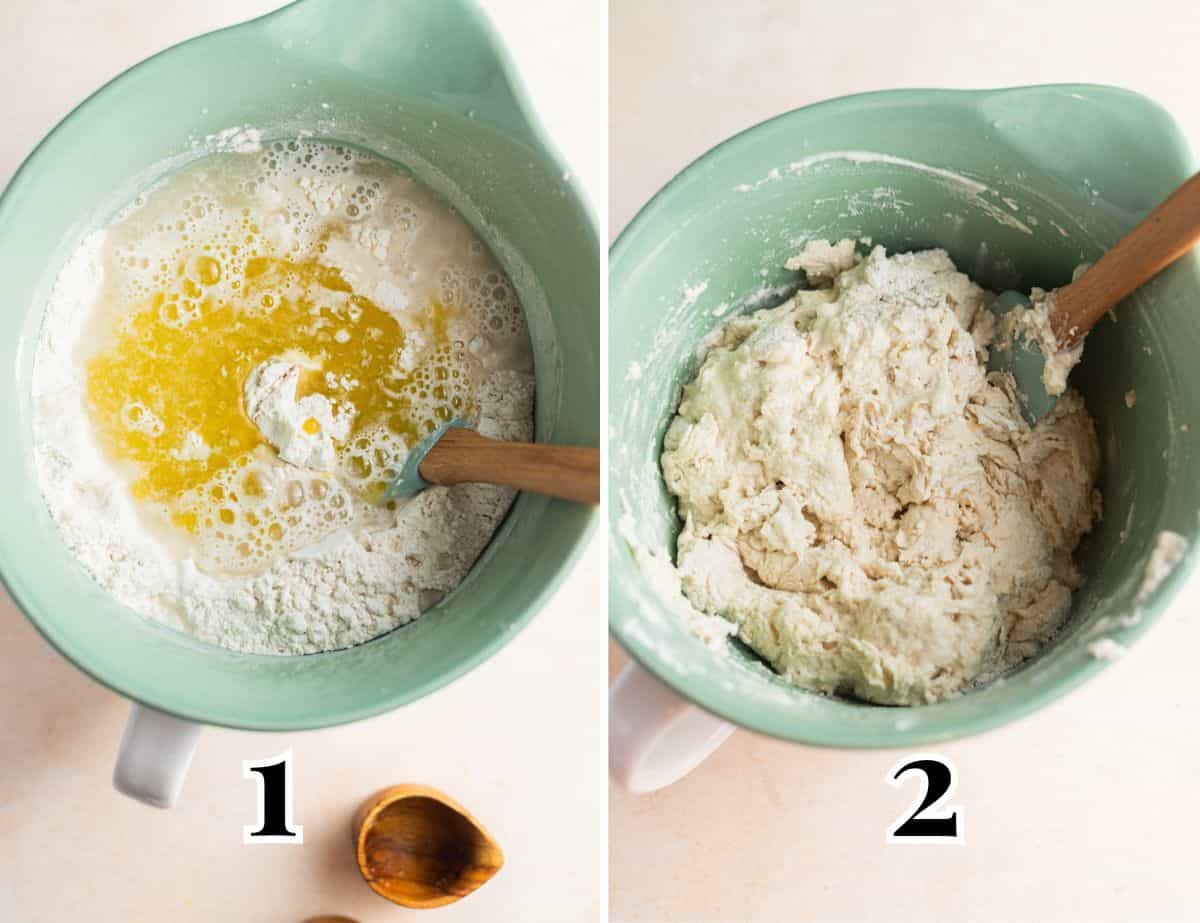
Form a well in the center of the bowl, then add the water and extra-virgin olive oil.
Use a wooden spoon or spatula to slowly begin incorporating the wet ingredients into the dry (Image 1). Continue mixing until a shaggy dough forms with no dry spots. Sometimes it’s easier to get your hands dirty and finish mixing by hand. It will be incredibly sticky at this point (Image 2).
Let the focaccia dough rest for 20 minutes before performing stretch and folds.
Stretch and Fold Method:
💡What is a Stretch and Fold?💡
A stretch and fold is a gluten strengthening technique in breadmaking where you pick up and stretch your dough and fold it onto the other side. It helps strengthen your dough without kneading — it’s a much more lax way to develop gluten.
If you visualize your dough as a rough rectangle with four sides, one “set” of a stretch and fold means: 1) picking up the dough from one side (Image 3), stretching it upwards until it feels taut, then folding it onto the opposite side (Image 4), 2) rotating the bowl 180 degrees, then stretching and folding again (Image 5), 3) rotating the bowl 90 degrees, stretching and folding, 4) turning the bowl 180 degrees, stretching, and folding again onto the other side (Image 6).
In total, each “set” involves rotating, stretching, and folding 4 times, with a 30 minute break in between to allow the gluten to relax.
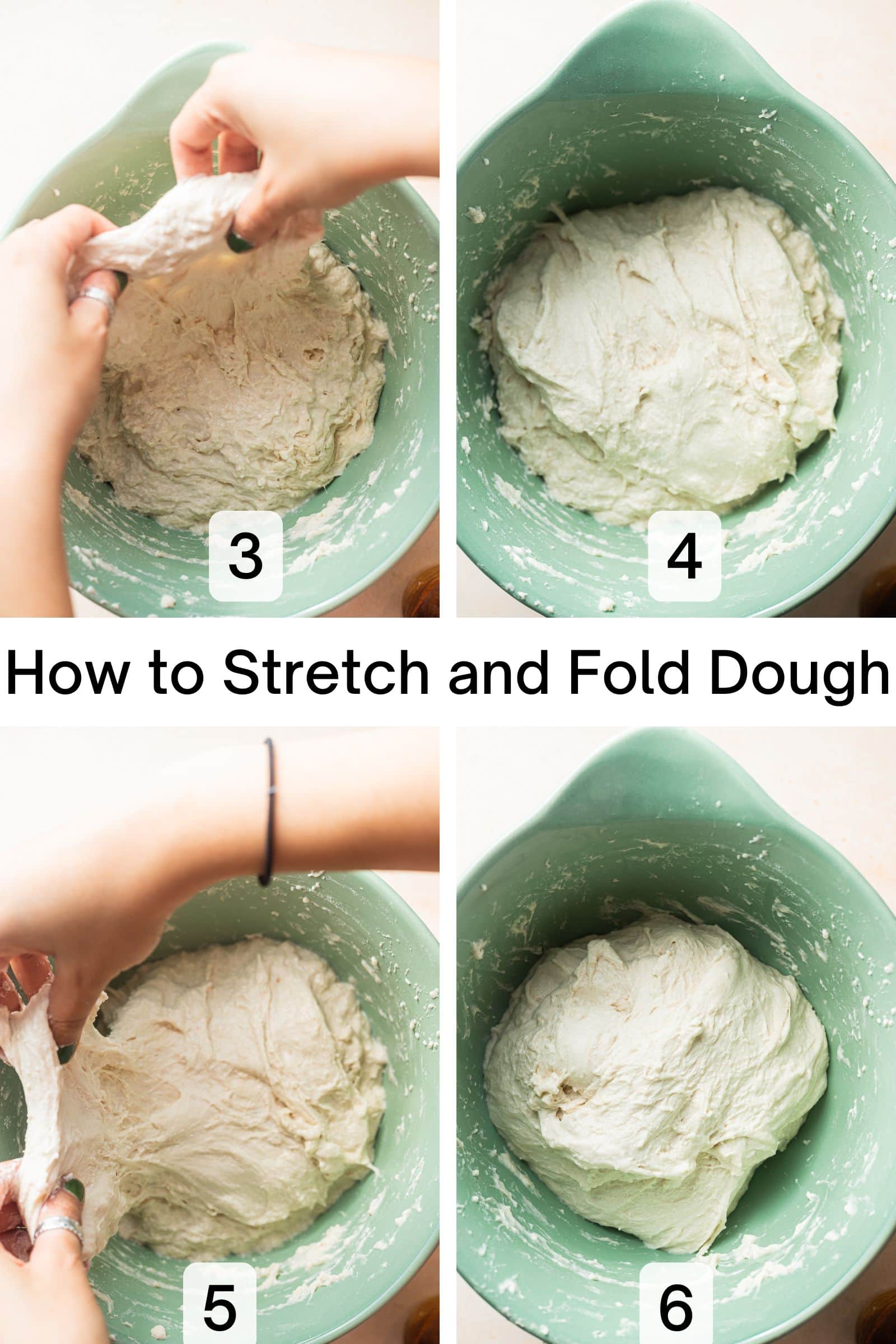
After the last stretch and fold, cover the bowl with plastic wrap and chill in the fridge for a minimum of 24 hours up to 72 hours. During this time, the dough will slowly ferment, further developing flavor and yeast activity.
If you'd like to learn more about the science of dough fermentation, check out my cold fermented pizza dough recipe.
Rest and Rise:
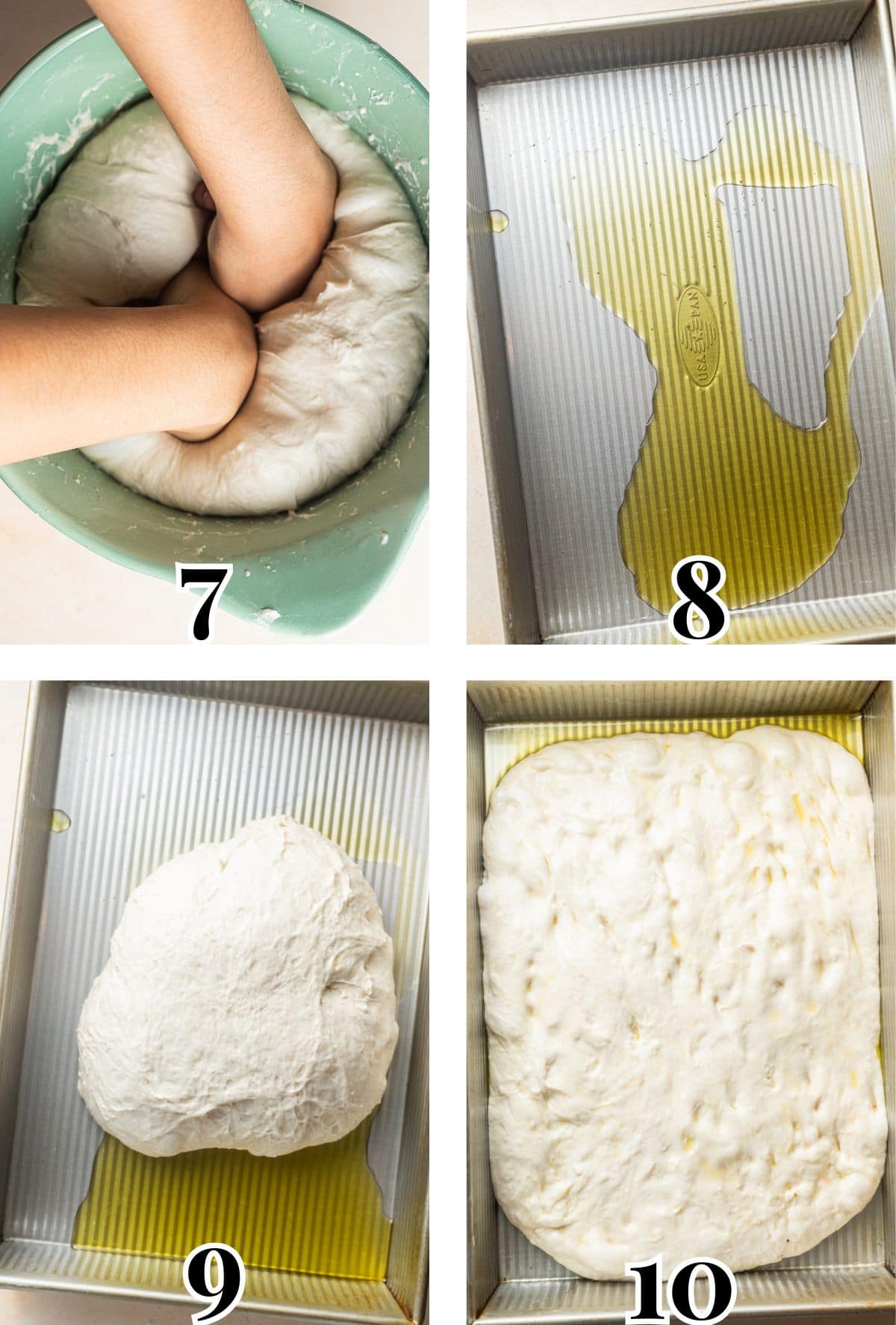
Remove bowl from the fridge. Drizzle the bottom of the pan with a couple tablespoons of olive oil (Image 8). Punch down the dough (Image 7) to remove any excess air bubbles, and transfer it to the pan (Image 9).
Over the course of an hour, stretch the dough (the dough will initially resist stretching after taking it out of the fridge, that's normal!) a few times until it fills the entire pan (Image 10). Let the dough rise for another hour or so until nicely bubbly.
TIP: If your pan is not fully non-stick, line the bottom with parchment paper.
Dimple and Bake:

Drizzle some olive oil all over the surface of the dough, then sprinkle with flaky salt and any desired toppings. To dimple the dough, firmly press down with the tips of your fingers (Images 11 & 12).

Bake in the oven until golden-brown and crispy on the top and bottom (Image 13). Remove from the oven, immediately drizzle with a little bit of olive oil (Image 14). Cool for a few minutes before transferring to a wire cooling rack to cool completely before digging in!
Variations
- Temperature: The higher the oven temperature, the sooner the outside will brown and form a crust. From my experimentation, I noticed higher temperatures with a thinner dough lead to crispier focaccia. On the other hand, lower temperatures with thicker doughs yield a softer crumb.
- Fermentation Time: This dough can be refrigerated for up to 72 hours. The longer the ferment, the more the flavor develops. Additionally, longer fermentation times yield bubblier focaccias.
- Liquids: I’ve successfully subbed apple cider and other beverages for some of the water, producing a moist interior with a slight sweetness. Play around with hard cider, beer, even orange juice — the sky's the limit! I recommend subbing 20% - 50% of the water.
- Toppings: Thinly sliced red onion, olives, garlic confit, rosemary, grapes, chilies, or cheese all make great toppings. Tomatoes are delicious as well, though raw tomatoes can make the crust a bit soggy, so pre-cook them first to remove some moisture.
- Pan Shape/Size: I recommend baking this in a non-stick aluminized steel 9x13 pan for a thicker, fluffier bread. You can use an 18x12 pan for a thinner sandwich bread (but scale the recipe up 20% if so). Baking times will vary if you use a different type of pan!
Recipe FAQs
Absolutely!
100% High-protein 00 flour or Bread flour
0.5% Instant Yeast
3% Diamond Crystal Kosher Salt
75% Water
5% Extra-Virgin Olive Oil
Saturday Morning:
9:00AM - Prep dough
9:30AM - Autolyse/Rest
9:50AM - 11:50AM - Stretch and Folds and 1st rise
11:50AM - Fridge
Sunday Morning:
12PM - Remove from fridge and transfer to pan. Stretch every 20 minutes or so for an hour.
1PM - 3PM: 2nd rise
2:00PM: Preheat oven
3PM: Dimple dough and bake
3:20PM: Remove from oven and cool.
Yes, it’s expected that the dough will still rise in the fridge! The fermentation will be slower than at room temperature, but you should still see visible bubbling and rising.
I love eating this focaccia alongside a tender & juicy steak, brothy beans, mushroom bourguignon, jalapeno artichoke dip, or this whipped ricotta!
Focaccia is best enjoyed the same day it's made but will continue to taste fresh for 2 to 3 days at room temperature as long as it's stored in an airtight container or plastic bag. Leftovers can be reheated, wrapped in foil in the oven, at 350°F/177°C, for 5 to 10 minutes until warmed through.
Did you try this recipe?
I would love to hear your feedback! Be sure to rate the recipe and leave a comment below.
For even more cozy recipes, be sure to subscribe to my newsletter.

Note: This recipe was tested by an in-house recipe tester. The post was originally published in January 2021 and last updated in May 2025 to streamline instructions and step-by-step photos. The recipe remains the same, as it's incredibly loved as is!

Fluffy Focaccia Recipe
Equipment
Ingredients
- 600 g high-protein 00 flour or bread flour, for 00 flour, I recommend Antimo Caputo
- 3.2 g instant yeast
- 18 g diamond-crystal kosher salt, if using any other type of salt (Morton, Sea Salt, etc.) and measuring by volume, measure ½ of the volume listed.
- 450 g room temperature water
- 30 g extra-virgin olive oil, plus more for dimpling and topping
Instructions
- In a large bowl, combine 600 g high-protein 00 flour or bread flour, 3.2 g instant yeast, and 18 g diamond-crystal kosher salt using a wooden spoon.
- Make a well in the center of the bowl, and pour in 450 g room temperature water and 30 g extra-virgin olive oil. With a wooden spoon or your hands, slowly begin incorporating the dry ingredients into the wet ingredients.
- Continue mixing until fully incorporated and no dry bits remain, about 3 minutes. The dough will feel very wet and sticky.
- Cover the bowl with plastic wrap and allow the dough to rest, covered, for 20 minutes.
- Bulk Fermentation: Perform four sets of stretch and fold every 30 minutes over the course of 2 hours (see recipe post for visual demonstration). After each set of stretch stretch and fold, keep the dough covered with plastic wrap, allowing it to rest in between each set. If the dough feels too sticky, moisten your hands with water for easier stretching.
- At the end of the 2 hours, the dough should have risen slightly and shown some signs of bubbling/yeast activity. If it doesn't show any signs of activity, let sit at room temperature for another hour.
- Cover the bowl with plastic wrap, then chill in the fridge for a minimum of 24 hours up to 72 hours.
- After allowing the dough to ferment, remove the bowl from the fridge. Generously grease the entirety of your baking pan with at least 2 tablespoons of extra-virgin olive oil.
- Punch down the dough with your hands. Then, using a bench scraper or your hands, tilt the bowl and scrape the dough onto the oiled pan in one piece. Coat the dough with the oil from the pan on all sides. Ensure the smoother side of the dough remains face-up.
- Stretch the dough gently towards the edges of the pan. It will likely resist a lot of stretching initially. Stretch the dough approximately every 20 minutes until it stretches all the way to the corners of the pan, about 1 hour.TIP: I often place my hands on the underside of the dough to stretch, as I think it stretches more easily and evenly.
- Let dough rest, uncovered, for an additional 2 - 4 hours until it reaches room temperature, doubles in size, and appears quite bubbly. About an hour before the dough has fully risen, adjust the oven rack to the middle of the oven and preheat the oven to 500°F/260°C.
- Once the dough has risen, drizzle another 2 tablespoons of olive oil evenly over the top. Generously top with flaky sea salt (or kosher salt), and add any toppings.
- Moisten your hands with a bit of olive oil. Dimple the dough by gently pressing your fingers into the top of the dough.
- Bake in the oven for about 10 minutes until golden brown on top.
- Rotate the pan 180°, then reduce the heat to 450°F/232°C and bake for another 10 - 15 minutes until golden brown on the top and bottom. Note: To test if the bread is browned on the bottom, I remove it from the oven and use a metal spatula to carefully lift it up and check the coloring. As long as the pan is non-stick (or lined with parchment), it should lift up relatively easily. If you find the bottom is browning too quickly compared to the top, you can move the pan to a higher rack. If the top is browning too quickly, tent with foil. If both sides are browning too quickly, turn heat down to 425°F/218°C.
- Remove from the oven, then drizzle with a bit more olive oil (about 1 - 2 teaspoons).
- Cool for 10 minutes, then transfer focaccia to a cooling rack or cutting board to cool completely before slicing.
- Once cooled to room temperature, slice the bread as desired and enjoy!
Video

Notes
- For best results, use a scale.
- For a crispier bottom, bake your focaccia directly on top of a preheated baking steel.
- Equipment: If you're using a pan that is less non-stick, make sure to put a bit more oil on the bottom and/or lay some parchment paper down.
- Storage: Focaccia is best enjoyed the same day it's made but will continue to taste fresh up to 3 days when stored in an airtight container or plastic bag.
- Leftovers: Leftover focaccia can be reheated, wrapped in foil in the oven, at 350°F/177°C, for 5 to 10 minutes until warmed through. You can make croutons by cutting up leftover focaccia into bite-sized cubes, tossing them with olive oil, salt, and pepper, and baking at 375°F for 6 to 10 minutes until crispy. I also make breadcrumbs by grinding the stale bread in a food processor.
Nutrition
The nutritional information on this website is only an estimate and is provided for convenience and as a courtesy only. The accuracy of the nutritional information for any recipe on this site is not guaranteed.
References
https://theamericanmag.com/a-brief-history-of-seductive-focaccia/
https://www.google.com/books/edition/Delizia/nB6NtvQhYDYC?hl=en&gbpv=1&bsq=history%20of%20focaccia




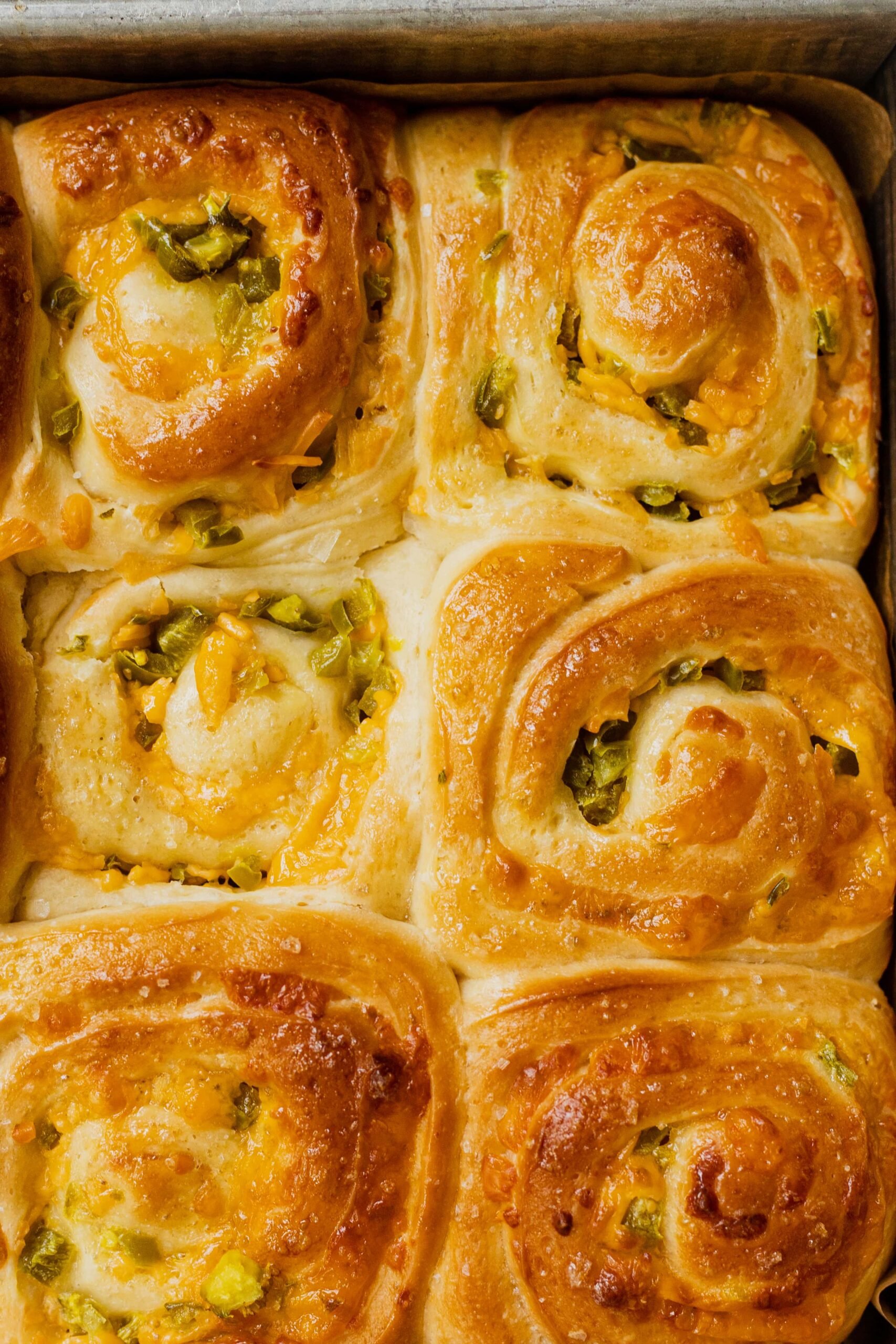
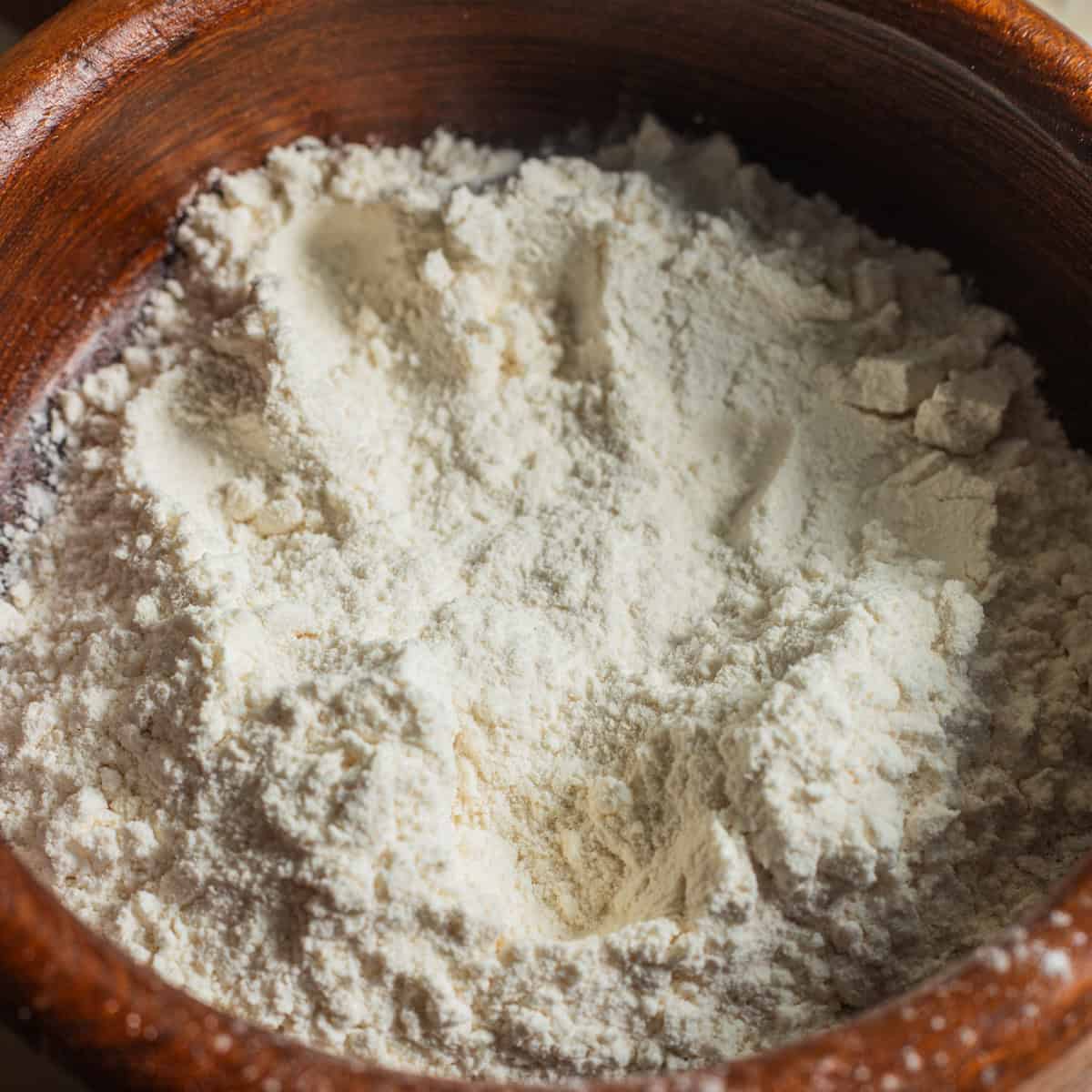



I made this today/yesterday. Absolutely delicious. I used a bit more yeast than the recipe said just because it was easier to have half a sachet left! Made the dough about 9pm last night and cooked it around 3pm to allow it time to cool. Already made sandwiches with the leftovers and put them straight in the freezer for my daughter to be able to pull out an easy lunch, I figure the bread will stay fresher that way. Gorgeous recipe, will defo be making again, thank you 😋
Hi Mikala,
So glad you enjoyed! And glad you were able to make it with the modifications too - it definitely works fine with more yeast so I totally get that!